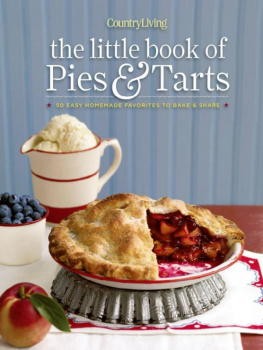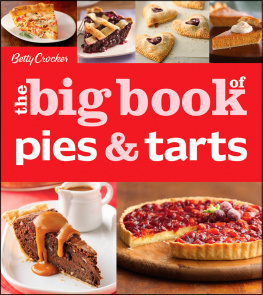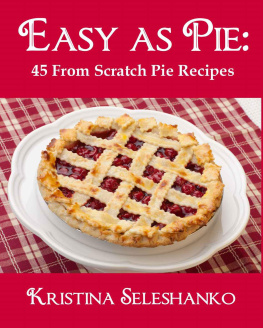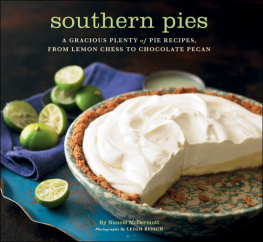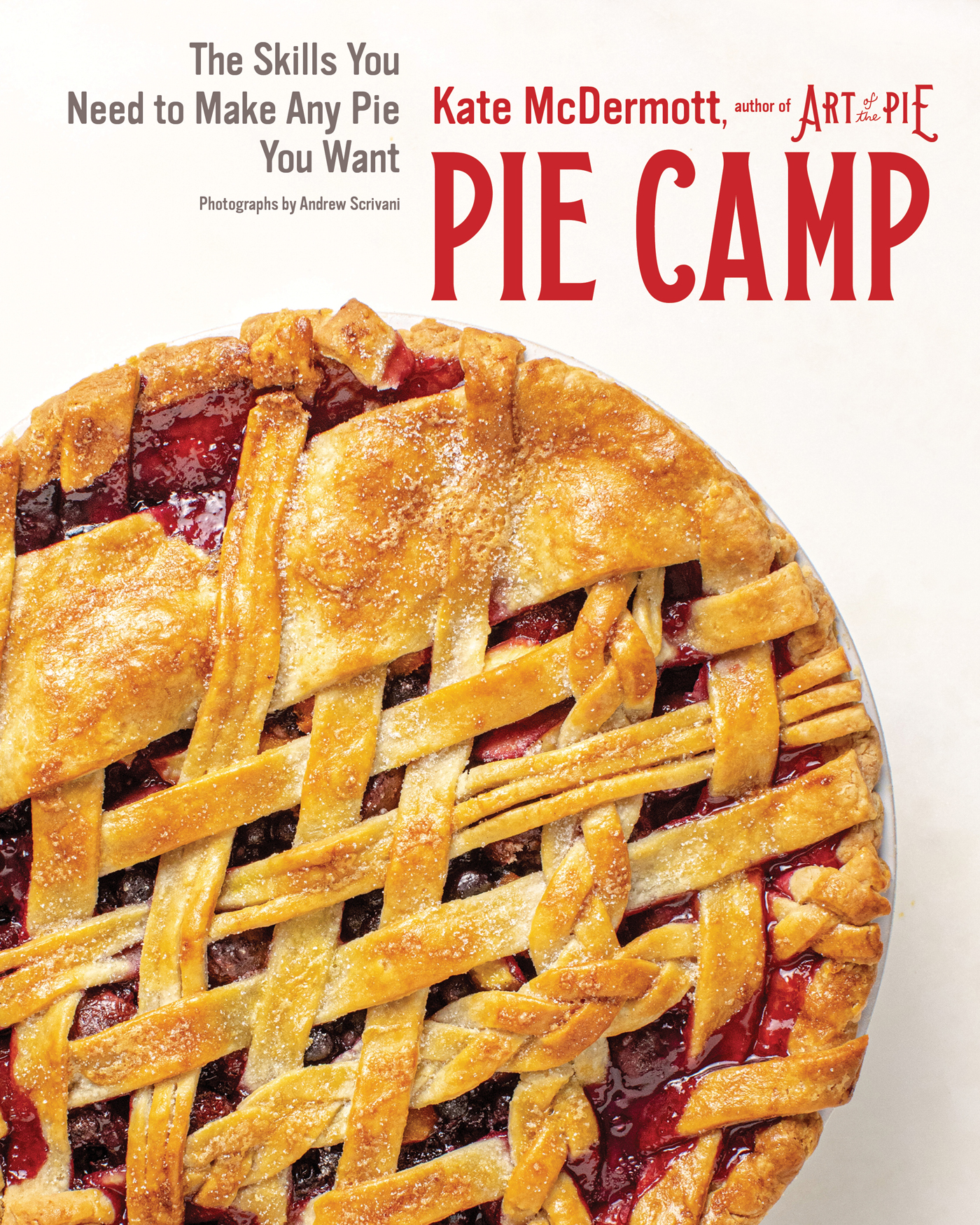PIE CAMP
The Skills You Need to Make
Any Pie You Want
Kate McDermott

For my sister Helen
Copyright 2020 by Kathleen L. McDermott
Photographs copyright 2020 by Andrew Scrivani
All rights reserved
For information about permission to reproduce selections from this book, write to Permissions, The Countryman Press, 500 Fifth Avenue, New York, NY 10110
For information about special discounts for bulk purchases, please contact W. W. Norton Special Sales at specialsales@wwnorton.com or 800-233-4830
Library of Congress Cataloging-in-Publication Data is available
Book design by Nick Caruso Design
Production manager: Devon Zahn
The Countryman Press
www.countrymanpress.com
A division of W. W. Norton & Company, Inc.
500 Fifth Avenue, New York, NY 10110
www.wwnorton.com
978-1-68268-413-9
978-1-68268-414-6 (eBook)
Find something youre passionate about
and keep tremendously interested in it.Julia Child
Damn good pie! Dale Cooper, Twin Peaks, 1990
Contents

I am so happy you are here.
Youve probably heard the phrase, Easy as pie, and wondered, can that be true? Well, I can tell you from my own experience as a lifelong home baker, that yes, these words really are true. Theres no secret to pie making except one, and Im going to share that with you right now. You dont need to know all that much to make a darn good pie! Once you learn the basic techniques of dough and filling, you are on your way to making whatever pie you can imagine. My goal is to give you the confidence and knowledge to do just thatto make any pie you want.
In these pages, I will show you how to make roll-out doughs using all-purpose or gluten-free flour, how to adapt them for those who are vegetarian or vegan, and how to make super simple press-in cookie crumb crusts. Fruits of every kind will go into our fillings, and I will show you a simple-to-learn formula for any fruit pie that can be finished off with a top crust, latticed, topped with pre-baked designs using cookie cutters, or baked open faced. I will share with you how I make a lofty meringue, light and billowy flavored whipped cream, and crumble toppings. Youll learn to make cool and luscious cream pies, refreshing chiffons perfect for hot summer days, and old-time custard pies that can be made from the most basic ingredients likely on hand in your cupboard and icebox right now. Then, youll see how easy it is to put your own flavor spin in a filling by using the seasonings that you like. Its your pie, right?
All of these can be made in pie pans of all different sizessome big, some small, and sometimes without any at all. But lets not stop there. For special celebrations when multiple pies might be needed, Ill break down the steps and stages so you wont have to do everything at the last minute. And for those times when a full-size pie might be more than you need, Ill show you how to size down your dough and filling to make a pie-let for just one or two. Plus, youll find recipes for homemade ice cream, too, so you can place the la mode on a slice, a crisp or crumble, or an old-fashioned pandowdy, which is a baked fruit dessert you may not know about that is topped with a pie dough.
After decades of making, baking, teaching, and writing about pie, I still can say that I am absolutely enamored with it. It has become my vocation, and like the lattice strips that top a seasonal fruit filling, my life and work have intersected. I have taught over 4,000 pie campers, from beginners of all ages making their very first pie to well-practiced professionals.
As I write these words, our world is upended in the middle of the COVID-19 pandemic. We shelter in place, protecting our world, communities, and loved ones, as just about everything that we once took for granted has been put on hold. Activities of self-reliance and centering have come into the spotlight. Pie making is one of them. It can bring calm to the most stressful of times, as it did when my grandmother Geeg suffered a stroke. As I described in Art of the Pie, at that moment I quickly handed her a bowl and ingredients and she began to make piea skill that she taught me and that I, in turn, taught my son and her great-grandson, Duncan.
Now, its your turn to join the unbroken line of the generations of pie makers who have come before us. No matter what your age or skill level, whether its your first or thousandth pie, put on your apron, get out your rolling pin, and come join me at the Pie Camp baking counter.
A Very Brief History of Pie
In the simplest of terms, pie is dough encasing a filling, which is then baked. It may be the ultimate international food, as it is enjoyed in almost every cuisine. To quote from The Oxford Companion to Sugar and Sweets, Wrapping food in dough before cooking is a very ancient and widespread practice, and one the ancient Greeks and Romans enjoyed. The first mentions of pie in the English-speaking world show up around the turn of the 14th century. I can imagine my funeral director father chuckling to learn that in 15th-century medieval Europe, fair little [baked] coffyns were used to preserve and store foodthink the original Tupperware here.
As fascinating and long a history as pie in Europe has, let us jump over the pond to North America in the 17th century, when the first permanent English settlement was established. Along with their hopes and dreams, they brought their recipes for pies, both sweet and savory. Sweet apple pies were among those recipes, but the receipts, as they were called then, were quickly adapted to make use of new world foods such as squash and cranberries.
Leapfrogging again nearly 200 years to the late 1800s, we arrive at one of pies less than happy moments, when Wilbur O. Atwater sought to demonize the wasteful food traditions of working class immigrants to America with his venture called the New England Kitchen. Sarah Tyson Rorer, the influential food editor of Ladies Home Journal, championed his ideas and went so far as to say, All forms of so-called pie are to be condemned. Thank goodness the movement lost favor, as pie for breakfast, pie for lunch, and pie for dinner provided standard fare for farming families who made up the backbone of America.
All across America, there are regional favorites and official state pies. But as apples originated in Central Asia, and wheat was first cultivated in northern Iran and sugar in Asia, and spices came from Indonesia, the phrase, as American as apple pie, is truly representative of the international melting pot of our country. As centuries old as the history of pie is, it is with the continued making and sharing of home-baked pie set upon our table that we keep this craft alive for future generations.

A Few Thoughts about Clean and Tidy
You might glance around your kitchen, after a particularly creative pie-making session, to find every counter covered with ingredients, spills, a sink full of bowls and utensils, and a floor sporting the latest in fillings and dough trimmings. When all you want to do is sit down, this can feel overwhelming. Sixty plus years of baking has brought me to the realization that no magic fairy is going to come in to put things back in order with the wave of a wand. Ive found that multiple small cleanups take just about the same amount of time when added together as one great big cleanup at the end. I tryand let me emphasize the word


